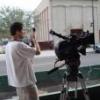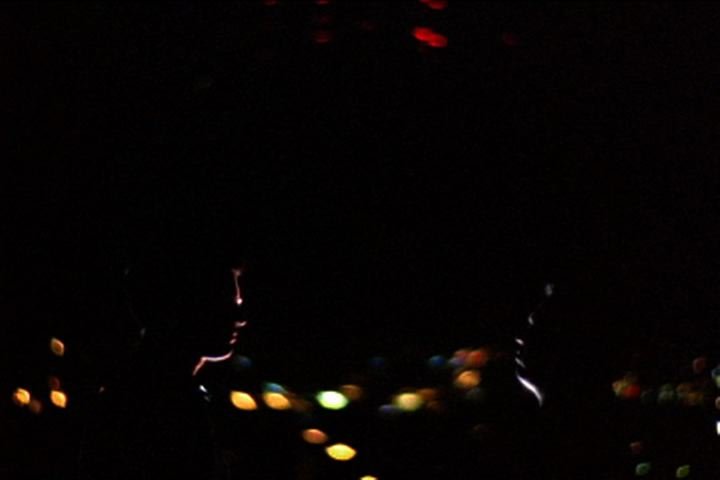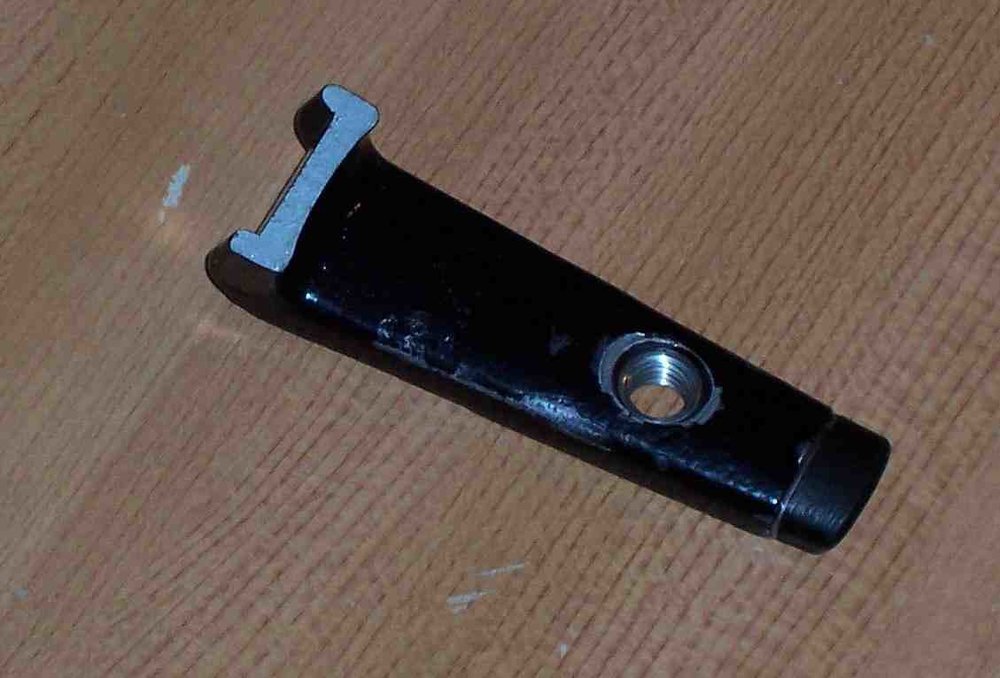-
Posts
21 -
Joined
-
Last visited
Everything posted by Eric Moers
-

Dark Knight Rises, no 3D and in IMAX
Eric Moers replied to Vincent Sweeney's topic in On Screen / Reviews & Observations
I've seen a few shows projected at the Laemmle theaters, and they've all been poor presentations. Their projectors have very dim bulbs, the dolby surround reader never works, focus drifting... The Egyptian theater on the other hand, I'd say is the best theater in LA. The 35mm/70mm presentations are often flawless. Arclight theaters are usually solid. David, what other theaters do you think compare in quality? -

film finish / anamorphic 35mm ... anyone done this lately?
Eric Moers replied to Matthew Hannam's topic in Post Production
Why should there be any problems with a technology that is decades old? Optical finishing is usually cheaper, and for anamorphic, sharper than a DI finish, at least when projected on film. I suppose a major advantage for DI is if the production has multiple visual FX and/or unique color work needed, but otherwise I don't see why there should be any opposition, or why that should affect your workflow. In fact, why opt for a DI at all? If you're cutting digitally or on film, then the process is the same as far as I understand. If photochemically, your work-print is conformed to the neg and then answer prints, release prints and so on. If digitally, your EDL is conformed, your neg scanned as digital files, colorized, and then those colorized files are printed out to film. As an editor, I'm not sure how that affects you so much, unless you're the one doing the neg cutting. With a DI you might have easier HD delivery and easier color timing, but at a bloated cost, for work that could've most likely been achieved photochemically. I personally don't care much for the DI look, as I find it lacks the nuance and range of photochemical film, with a few noted exceptions of course. I guess I just don't see the big advantage to a DI, unless there is a very specific look, and/or VFX in your production. Also the big question is, how will this film be seen? In movie theaters, direct to DVD, Internet? -

"Inglourious Basterds"
Eric Moers replied to Jonathan Bowerbank's topic in On Screen / Reviews & Observations
That's what I was saying also! I mean, I want to see some good anamorphic, especially from a master like Bob Richardson whose earlier photochemical anamorphic work is among some of the best, in my opinion. In fact I thought the DI in this film looked a little too contrasty. -

"Inglourious Basterds"
Eric Moers replied to Jonathan Bowerbank's topic in On Screen / Reviews & Observations
I totally and respectfully disagree with you guys and thought the movie was horrible. $70 million thrown to the winds... Seemed like the movie was made by a another director trying to copy Quentin Tarantino. Boring story, boring characters, long, pointless terrible dialogue verging on drivel, and even Robert Richardson's usual expert photography was a letdown. I didn't particularly find the anamorphic compositions that interesting and thought the digital intermediate look was too contrasty. Although I'm a fan of his work regardless, I think Bob Richardson's DI-films pale by comparison to his earlier contact-print work. In this case not bad, but nothing to shout home about IMHO. Back to Tarantino... With his other movies, there were plenty of scenes of people talking, but who the characters were and what they had to say was interesting and often compelling. In this movie, I didn't care about or find a single person interesting, except for the Landa (Jew Hunter) character at times. In fact, there was so much pointless talking and use of subtitles that in some cases, the dialogue interfered with the visual aspect of the film. For instance, there was a scene where Diane Kruger, Brad Pitt, and Eli Roth are planning their next move. Then there's a quick "deep focus" shot (looked like a split diopter as the blur line was visible), showing two actors in focus. Unfortunately I was too busy reading the oncoming and unending subtitles that I missed any subtleties in the performances. By the time I could see the composition, they already cut away, and I had no time to absorb the shot. This effort seemed totally immature. Just because it's vulgar and wastefully violent doesn't make this a unique film. Hell, "Caligula" was made 30 years ago, is equally violent and grotesque, and yet few, if any, call it a work of art. I'm sorry, but "2001: A Space Odyssey, Blade Runner, Dr. Strangelove..." I mean I respect your opinion, but there is no way "Inglorious Basterds" should be compared to, or even mentioned, in the same class as those great classic films. I'm glad you guys had fun at the movies and got your money's worth, but I find so little to like about this film. People are calling this "Art", I found it arrogant, pointless, repetitive and certainly don't get the hype. I'm curious what you guys liked about it and why. :unsure: -

Projections of stock footage
Eric Moers replied to Josh Mitchell Frey's topic in Lighting for Film & Video
I did an "artsy" short a little while ago on 16mm that had a scene where the character was back-lit by this 16mm projector only, with a lot of smoke to bring out the beam. It's a little crude, but our main "beam of light" was originally a Source 4, however the bulb just died and we had no spares. So we pulled out the 16mm projector and just used that. All in all it worked. Here's the raw footage, granted it's not in someone's house and there's really no coverage, but if it can be captured on 16mm with low light and a fairly slow lens (2.5/2.8 wide open I believe), I'm sure you can do it on video. As a matter of fact, when I took light readings on the walls, they read about 3/4's of a stop darker than what appeared to show up on the film. -
Here's a link to some of the other frames, where you can make out he shape a little easier. http://photobucket.com/lensdistortion
-
I recently finished a shoot that was supposed to be this Lynchian/surrealist type of thing. Anyway, we were using an old Arri 16BL with the standard 12-120mm angenieux, wide open at 2.5, with Vision3 500T. As you can see we had very little light, however in watching the dailies, the out of focus city lights have a strange, "teardrop" like shape that changes and becomes spherical when the camera moves. Anybody know what this might be?
-

Hard Candy / Silent Hill
Eric Moers replied to Rhys Cooper's topic in On Screen / Reviews & Observations
Actually that's incorrect. Hard Candy was shot Super-35, as the director clearly states in the DVD. They debated about using anamorphic but decided against it for what he claimed were focus pulling reasons, and just other practical issues. -

Question regarding ProMist filters
Eric Moers replied to Dror Dayan's topic in Lenses & Lens Accessories
You have to check out most of Robert Richardson's work, The Doors, JFK, Natural Born Killers, Bringing Out The Dead (although I think he used nets more), as he uses pro mist quite extensively and wonderfully. -

Need shaft of light without HMI???
Eric Moers replied to Kyle Stueve's topic in Lighting for Film & Video
I agree with Satsuki on using PAR 64's with the VNSP bulbs although they can be tricky to shape as they are more "dirty". Ellipsoidal Source Fours are good as well. Keep in mind that having a dark background will also greatly enhance the light shaft, sometimes just as well as haze. Actually I recently finished a 16mm shoot where we were going for a "Blade Runner" look with the strong beams of light, but of course we didn't have anywhere near the budget for Xenons or anything past 2K lights. We had a Source 4 we were using with a couple of custom made mirrors to bounce the light around this large hall. Someone mishandled the light and killed the bulb, which was the only one we had. We couldn't get a replacement until the next day, so luckily I brought with me a couple of 16mm projectors and used those instead. The projector gave off a much stronger beam and was flicker-free, although it would probably be unusable for your sound crew. -
Thanks a lot guys! I actually called Bernie O'Doherty, who fortunately had a spare SR3 handle lying around. The SR3 handle is much more comfortable and easy to grip. The camera was inspected by a local tech and everything registered as o.k. thank god! Those Arri's are built like a tank. Thanks again, happy shooting! Eric Moers
-
Thanks again!
-
Hey, thank you! Do you know where I could purchase another handle? Thanks again!
-
First off, happy holidays! Well, on set we recently had an SR2 fall and hit the floor from a very small height. Luckily the angle at which the camera fell was odd as the carrying handle took most of the hit and broke the fall. No other internal or external components were damaged, however the end piece (part with the 3/8" thread) of the Carrying handle broke off. What do you guys recommend I do to attach the piece of the handle back to the camera where it can hold the camera weight? Super glue, (rhino, gorilla), some special epoxy, or soldering?
-
Arricam Lite and 235 are 35mm cameras. CoM was 35mm sir.
-

"Before the Devil Knows You're Dead"
Eric Moers replied to Peter Moretti's topic in On Screen / Reviews & Observations
I think I read that in an AC article. He did mention that he used a long shutter quite often. AC Jan 07': "Semler increased the camera gain by as much as one stop, yielding an ASA of 2560. ?This all sounds wonderful, but care must be taken to avoid noise and unwanted blurring,? he says. ?At these extremely low light levels, the Genesis sees what your eye doesn?t, what you?ve never been accustomed to seeing. I prefer a 270-degree shutter and a 1/2 stop of gain for less blur and noise at an ASA of 1280, but in desperate times, I have gone all the way.? Even though Apocalypto had a lot of motion smear, it is by far the best looking HD film, thus far. -

"Before the Devil Knows You're Dead"
Eric Moers replied to Peter Moretti's topic in On Screen / Reviews & Observations
While I agree that theatrical projection and DVD viewing can be quite different, especially depending on a film or digital projection, I thought the cinematography for the picture was utterly forgettable. Almost lit like a sitcom. I don't think this movie made any advancements for the genesis, or the digital format for that matter. I'm not sure a film origination could've saved this stinker either... -

"Before the Devil Knows You're Dead"
Eric Moers replied to Peter Moretti's topic in On Screen / Reviews & Observations
I too was surprised by the lackluster quality of 'Before The Devil Knows You're Dead'. The movie as a whole stunk, and the lighting, framing, sets, and overall production were completely dull and totally forgettable. One scene that screamed "video" was when Ethan Hawk's character is driving away from the crime scene. Blown out lighting, video smear/blur... I don't know how these guys can watch the dailies and think everything is A-OK. Funny enough, I decided to watch the 'Making-of' on the DVD, the producers and Sidney Lumet were raving about how they were able to set up shots and get scenes done at lightning speed. That left me thinking that maybe they should have thought things through more. I was amazed that it was a professional production. Definitely not one of the best looking HD pictures IMHO. -
The Lighting in 'Searching for Bobby Fischer' just blew me away. The way faces and interiors were lit, made me pause the film more than a few times just to stare at the frame. Conrad Hall's work is just wonderful.
-
Terry Gilliam's take on the D.I. process.
-

Picking best Cenematograher for the project
Eric Moers replied to JP Dela cruz's topic in Directors and Directing
It's interesting to watch a DP's reel. Although they may give some idea of the images captured by that DP, to me reels are nothing more than music videos. Some scenes in a reel may look awful and be lit horribly, but perhaps in the context of the entire film, that scene HAD to look a certain way. Also, the way some reels are cut and musically scored, doesn't always work in the context of the actual film. I personally do not like judging too much on reels, and would rather meet with the people to see if a DP and myself can connect, professionally and personally. Meet with as many people as you can, if not for the learning experience. Talk with them about technical aspects of the film, narrative elements, sound, everything. Express your vision, and see if they pick up on the creativity and have some unique ideas of their own. Another interesting thing I like doing with DP's I meet and interview with, is to discuss other films. We talk sometimes for hours just about older films, styles, what we like, what he hates and I love, or the other way around; sometimes you can get an idea of what stimulates them. Just some food for thought. Best of luck!






